Research interests
1
1. Cluster mergers and cosmic ray acceleration
Diffuse radio emission termed as radio halos and relics are among the direct probes of the relativistic electrons and magnetic fields in galaxy clusters. Cluster mergers are closely linked to radio halos and relics but the precise conditions in a particular merger that leads to the generation of these sources is not well understood. A non-detection of such sources towards clusters is also useful to understand the physical conditions that can inhibit the formation of such sources. We are carrying out deep targeted observations of known radio halos and relics to understand the physics of particle acceleration in shocks and turbulence. A statistical study of these sources by surveying a large number of clusters across redshifts and masses is also being carried out.
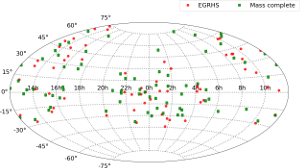
2
2. Life cycle of radio galaxies in and around galaxy clusters
The Brightest Cluster Galaxies (BCGs) and their activity in radio bands are known to influence the physical conditions in cluster cores and are themselves also influenced by the dynamical state of the host cluster. The BCGs and other galaxies like head-tail galaxies in clusters are important sources that deposit relativistic particles in the intra-cluster medium. Studies in the last decade have shown that for the mechanisms of turbulent and shock acceleration to work efficiently, a seed relativistic population is required. Radio galaxies and their remnants can be important sources of the seed relativistic electron population. However the spectra of the seed population are not known well and are often assumed to be simple power-laws. In our work we are modeling spectra of radio galaxies and their remnants under different physical conditions and also obtaining precise broadband measurements of the same.
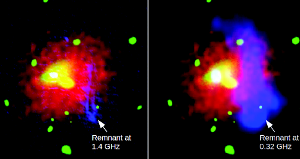
3
3. Non-thermal components of the cosmic web
The inter-galactic medium, that pervades the space between galaxies distributed across the cosmic web, is expected to be magnetised. In the process of large scale structure formation, shocks of Mach numbers reaching ~100 can be driven in the IGM and these can accelerate electrons to relativistic speeds. These energetic electrons and the weak magnetic fields will emit radiation by synchrotron mechanism that can be detectable in radio frequency bands. This emission will be a direct tracer of the non-thermal components of the cosmic web. We are surveying potential sites for detecting the cosmic web using a variety of methods.
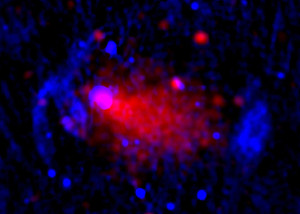
4
4. Radio Frequency Interference
Terrestrial signals in radio bands that hinder astronomical observations are termed as Radio frequency interference (RFI). I am involved in the testing and commissioning of the realtime broadband RFI mitigation at the GMRT. A recent NCRA Technical Report No. 1401 detailing the results from the tests is available here.
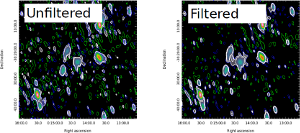
5
5. Data analysis pipeline for the GMRT
Observations in radio bands with telescopes like the GMRT result in recording of signals from all the antennas and correlating them. These data need to be processed in order to form an image of the sky. Given the data volumes it has become tedious to manually analyse such data. I have developed a pipeline using python and CASA to analyse the data from the legacy and the Upgraded GMRT called CAPTURE. It is available on github https://github.com/ruta-k/CAPTURE-CASA6.
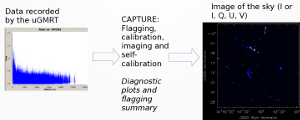
Phone :
020 2571 9234 / 9000
Email :
ruta@ncra.tifr.res.in
Follow Me :